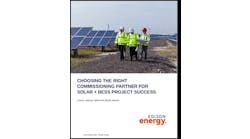NRDC’s Raya Salter discusses how New York’s Reforming the Energy Vision (REV) can help overcome economic energy insecurity — the inability to adequately meet basic household heating, cooling, and energy needs.
New York State is revolutionizing its electric system — a move NRDC has praised as positive and precedent-setting. The initiative, called ‘Reforming the Energy Vision’ or REV, will mean big changes for how communities, particularly low-income communities, interact with both energy and utilities. Among the initiative’s core principles, described by my colleague Jackson Morris as the “commandments of REV,” are addressing high energy bills and reducing carbon emissions.
New Yorkers Face a High Energy Burden
This is critical because according to the U.S. Energy Information Administration, New Yorkers pay the nation’s second-highest energy prices. This leads to a crushing energy burden for low-income New Yorkers. According to a 2013 New York State Energy Research and Development Authority home energy costs threaten not only the ability of New York low-income households to retain access to energy services, but also threaten access to housing, food, medical care and other necessities of life. This is true across New York State, in both rural and urban areas. Further, many low income communities, particularly communities of color, need immediate relief from the impacts of dangerous carbon emissions that impact them the most. For these “environmental justice” communities, action on energy prices and clean and renewable power is of primary importance.
New York Utilities Should Be Increasing Engagement with Low- to Moderate-Income Communities on Clean and Renewable Energy Projects
In a landmark February 26 order, regulators outlined a policy framework and implantation plan for the state’s energy revolution. New York’s new vision means that utilities will build a new platform in cities, neighborhoods and towns across the state to facilitate clean and renewable distributed energy resources. Because the state wants to make sure that customers and private markets invest in distributed energy, utilities won’t be allowed, for the most part, to own these distributed resources. Utilities will, however, be able to own distributed energy resources where a project will enable low or moderate income residential customers to benefit from clean distributed power the private market is unlikely to meet the need. Utilities will also be able to own distributed energy resources like solar, batteries and wind in areas of system need, in new demonstration projects and in projects that involve energy storage. This may start happening soon. In the February 26 order, utilities were directed to file demonstration project plans on July 1.
The New Con Edison $300 Low- to Moderate-Income DER Project in Brooklyn and Queens
This is likely to mean more projects in low- to moderate-income communities like the $300 million Con Edison Brooklyn Queens Demand Management project, which will work with low- to moderate-income communities, including New York City Housing Authority developments, to reduce customer usage. This $300 million is expected to defer the need for Con Edison to spend $1 billion on an upgrade. Projects that promote energy efficiency can reduce energy bills. In addition, this Con Ed project is likely to bring new storage or solar projects to certain low- to moderate-income communities in Brooklyn and Queens. The project may include micro grids, where more efficient clean heat and power generation (and often other resources, like solar) can provide local power and allow communities to go “off the grid.” This can not only save all utility customers money by deferring the big $1 billion upgrade, but can also make neighborhoods more resilient, or able to withstand extreme weather events like what the state experienced with Superstorm Sandy.
Projects like the Con Ed initiative are exciting developments. REV should mean that all communities, including environmental justice communities, can fully benefit from distributed energy resources. As the Energy Efficiency for All coalition has advocated for in the REV, this means that all communities are protected from dangerous emissions while receiving lower energy bills. In fact, the true clean energy opportunity lies in improving local emissions impacts, improving health, beautifying communities and creating wealth in communities. In addition, improved health, infrastructure and access to resources will make communities more resilient and better able to adapt in the face of climate change.
There is a Long Road Ahead and Much Work to Be Done
There is still much more work to be done to get communities better engaged in this significant undertaking because residents in low-income communities know all too well that words alone do not easily translate into improvements in their lived realities. This is especially true as other states look to the New York REV for guidance and inspiration as they also embark on utility reform. Energy insecurity is a national problem. According to the “Energy Insecurity among Families with Children” report co-authored by Dr. Diana Hernandez of the Mailman School of Public Health at Columbia University, nationally over 80 percent of families living in extreme poverty (with a family income less than 50 percent of the federal poverty level) face economic energy insecurity, which reflects an inability to adequately meet basic household heating, cooling, and energy needs. About 60 percent of families whose income is 50-99 percent of the federal poverty level also face economic energy insecurity.
New York’s energy revolution is just beginning and it is off to a good start. We look forward to working with communities, stakeholders and regulators to ensure that REV results in both a cleaner, healthier environment and lower electricity bills for all New Yorkers, regardless of income, age, race, neighborhood or vulnerability.





